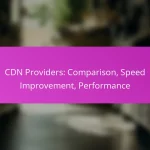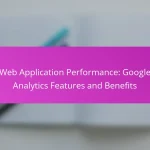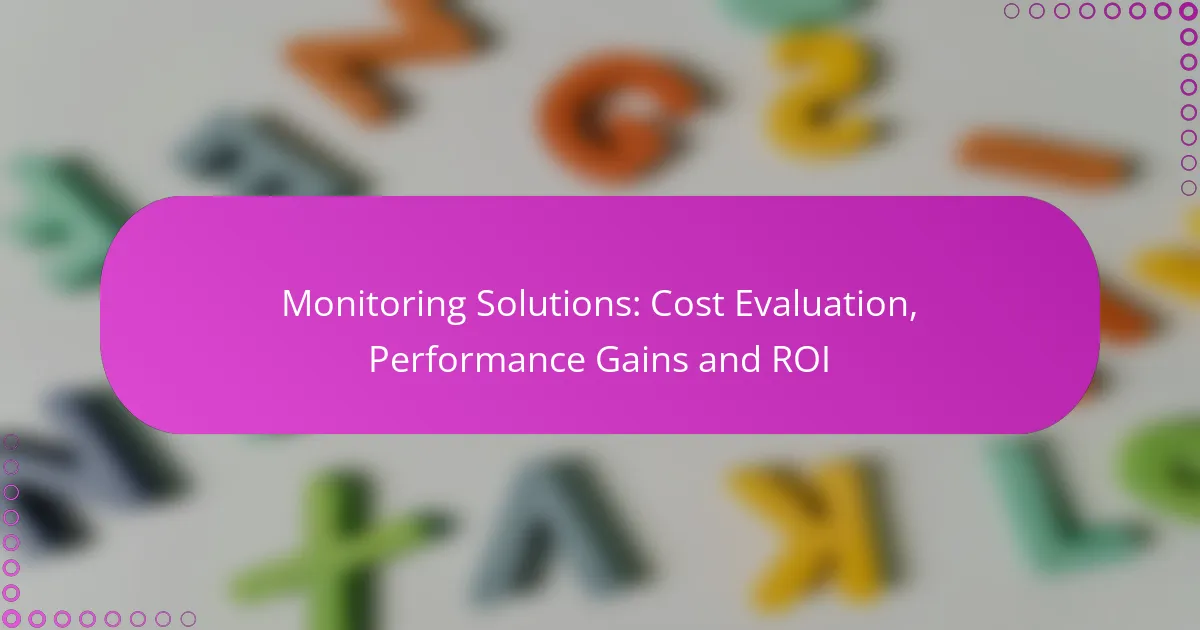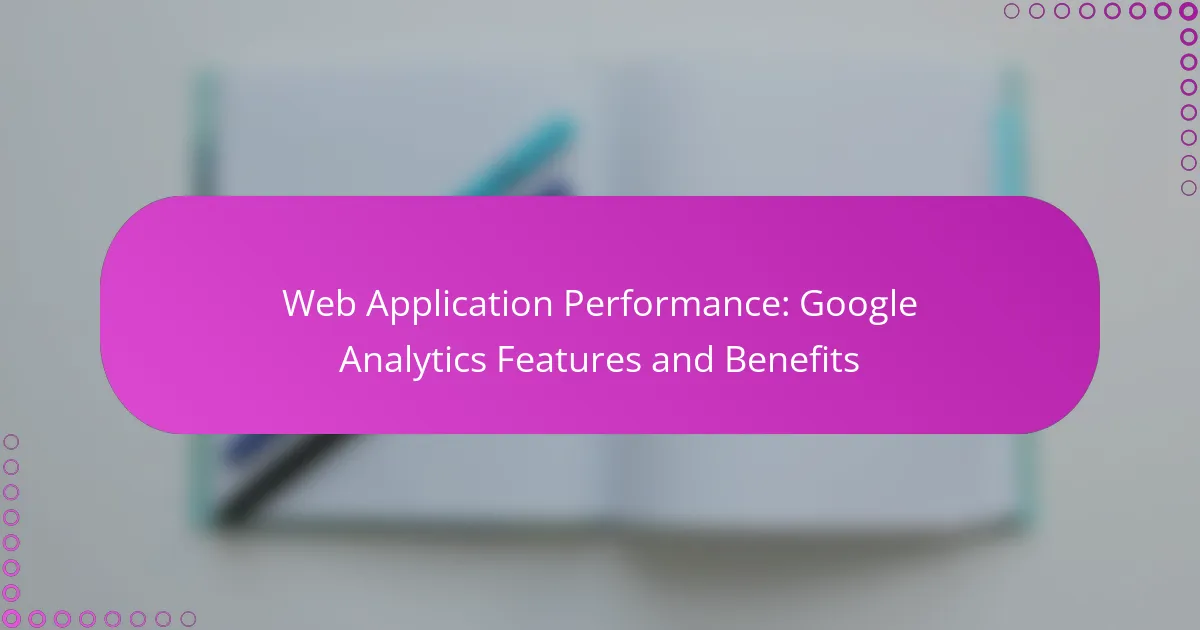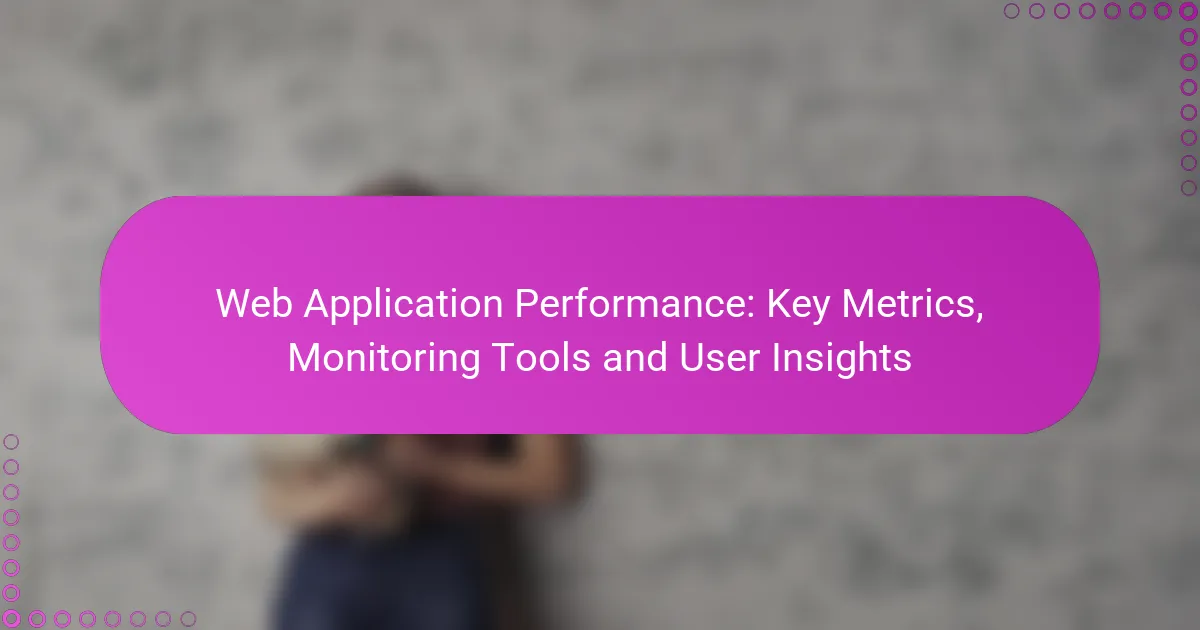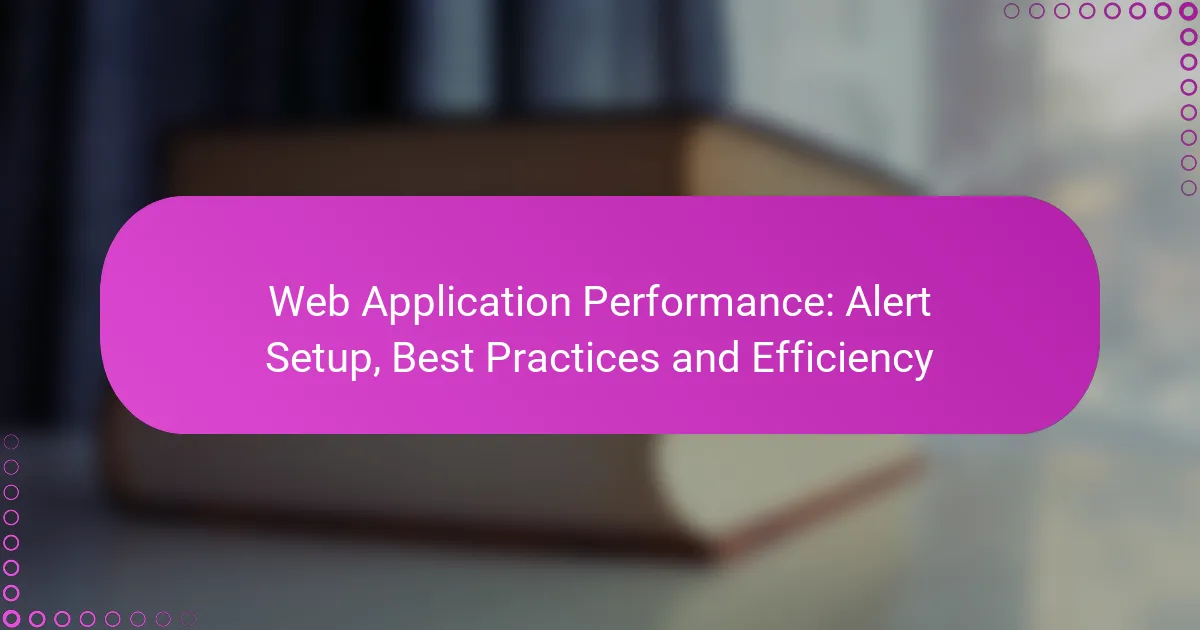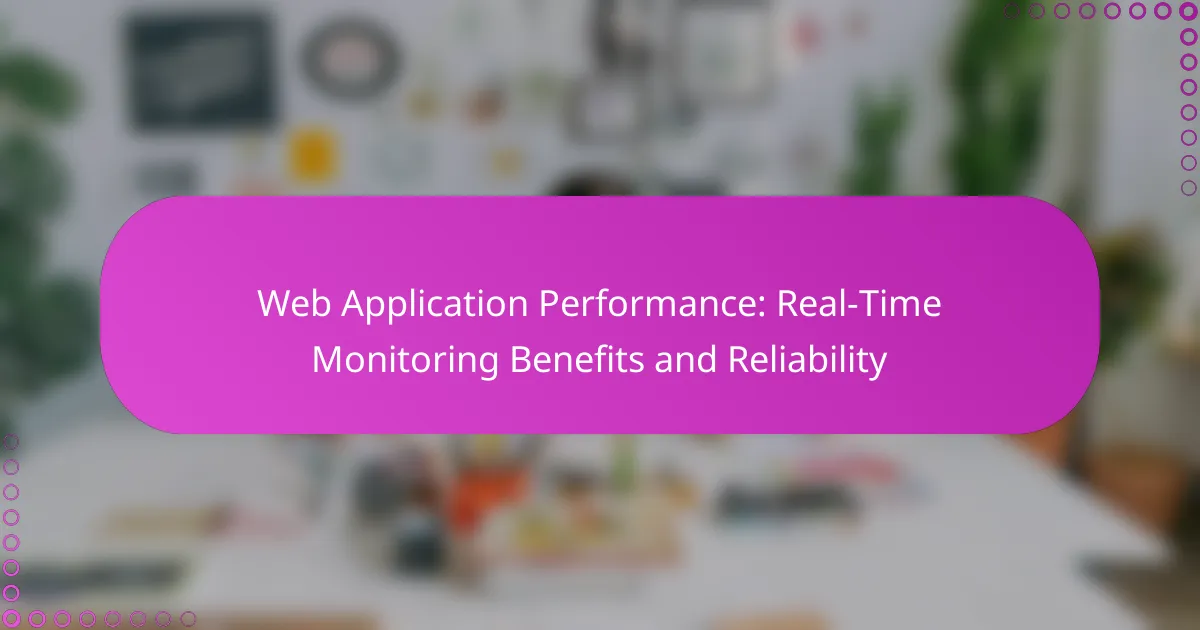Effective monitoring solutions are essential for businesses seeking to enhance system performance and user experience through real-time insights. By identifying issues promptly and optimizing resources, these tools not only improve efficiency but also contribute to significant performance gains. However, organizations must carefully evaluate the costs associated with implementation, including initial and ongoing expenses, to ensure a favorable return on investment.
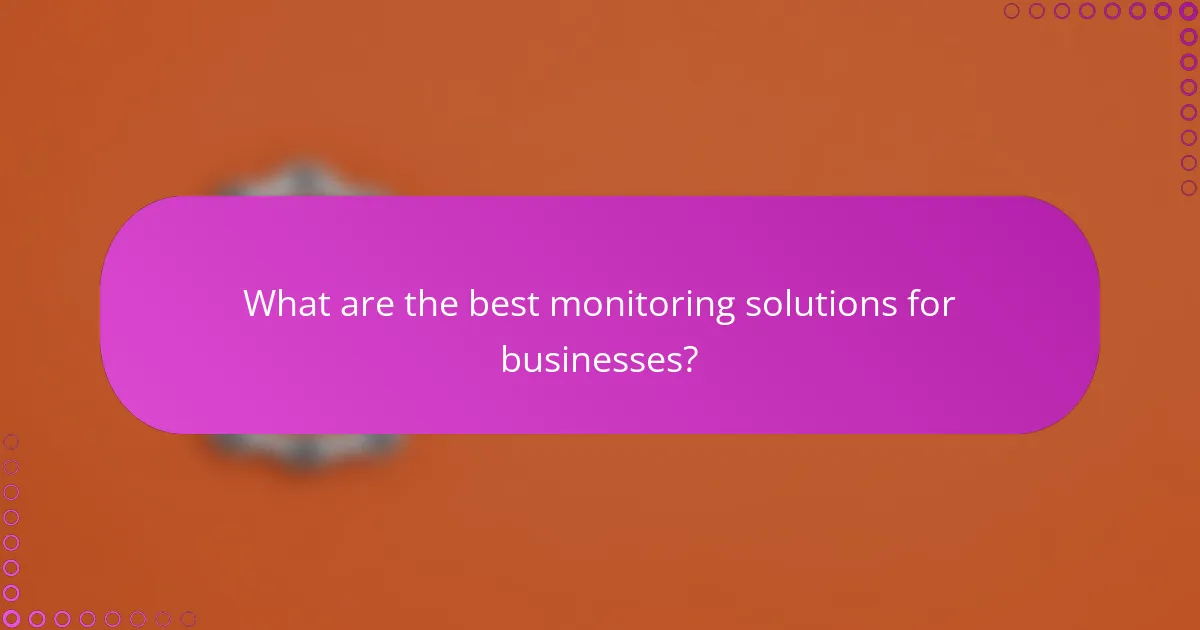
What are the best monitoring solutions for businesses?
The best monitoring solutions for businesses include tools that provide real-time insights into system performance, application health, and user experience. These tools help organizations identify issues quickly, optimize resources, and improve overall efficiency.
Datadog
Datadog is a comprehensive monitoring platform that offers visibility into cloud applications and infrastructure. It integrates with various services, providing real-time metrics, logs, and traces to help teams troubleshoot issues effectively.
Consider using Datadog if your business relies heavily on cloud services, as it excels in monitoring multi-cloud environments. Pricing typically starts in the low tens of USD per host per month, depending on the features selected.
New Relic
New Relic focuses on application performance monitoring (APM) and provides detailed insights into application behavior. It helps developers and operations teams understand how their applications perform in real-time.
This solution is ideal for businesses looking to enhance user experience and optimize application performance. New Relic’s pricing is based on usage, often starting around USD 99 per month for basic features.
Splunk
Splunk is a powerful platform for searching, monitoring, and analyzing machine-generated data. It is widely used for log management and security information and event management (SIEM).
Businesses that require deep analytics and security monitoring should consider Splunk. Its pricing can vary significantly based on data ingestion volume, often starting in the hundreds of USD per month.
Prometheus
Prometheus is an open-source monitoring solution designed for reliability and scalability. It is particularly effective for monitoring containerized applications and microservices.
Prometheus is a great choice for organizations that prefer a customizable solution without licensing costs. However, it requires more setup and maintenance compared to commercial options, making it suitable for teams with technical expertise.
AppDynamics
AppDynamics specializes in application performance management, providing insights into application performance and user experience. It helps businesses identify bottlenecks and optimize application performance.
This solution is particularly beneficial for enterprises with complex applications. AppDynamics typically charges based on the number of applications monitored, with pricing starting around USD 3,000 per year for basic packages.
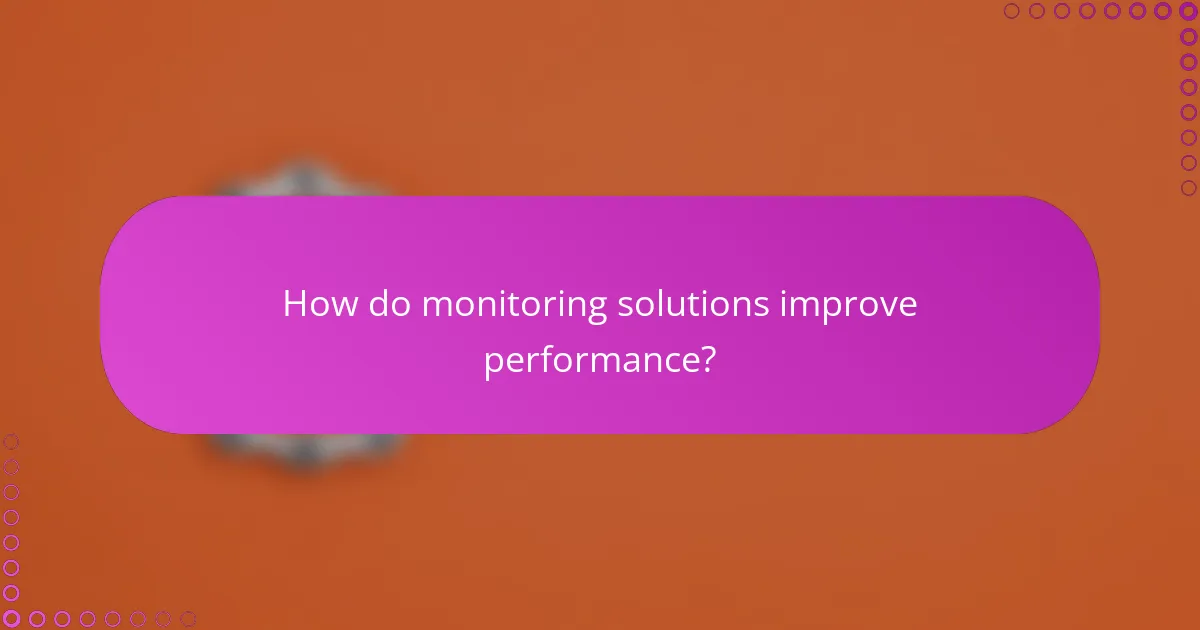
How do monitoring solutions improve performance?
Monitoring solutions enhance performance by providing visibility into system operations, allowing for timely interventions and optimizations. They enable organizations to identify bottlenecks, track resource usage, and implement improvements that lead to increased efficiency.
Real-time data insights
Real-time data insights allow organizations to monitor system performance continuously, identifying issues as they arise. This immediate access to information helps teams make informed decisions quickly, reducing downtime and improving service delivery.
For example, a network monitoring tool can display traffic patterns, enabling IT teams to adjust bandwidth allocation dynamically. This proactive approach can lead to performance gains of up to 30% in some scenarios.
Automated alerts and notifications
Automated alerts and notifications are critical for maintaining system performance without constant manual oversight. These alerts notify teams of potential issues, such as server overloads or security breaches, allowing for swift action before problems escalate.
Implementing a threshold-based alert system can help organizations respond to issues within minutes, significantly reducing the risk of prolonged outages. For instance, setting alerts for CPU usage above 80% can prevent performance degradation.
Resource optimization
Resource optimization involves analyzing usage patterns to allocate resources more effectively. Monitoring solutions can identify underutilized resources, enabling organizations to reallocate them where needed, thus maximizing efficiency.
For example, cloud-based monitoring tools can help businesses adjust their resource allocation based on real-time demand, potentially saving tens of percent on operational costs. Regularly reviewing resource usage can lead to significant cost reductions and improved performance over time.
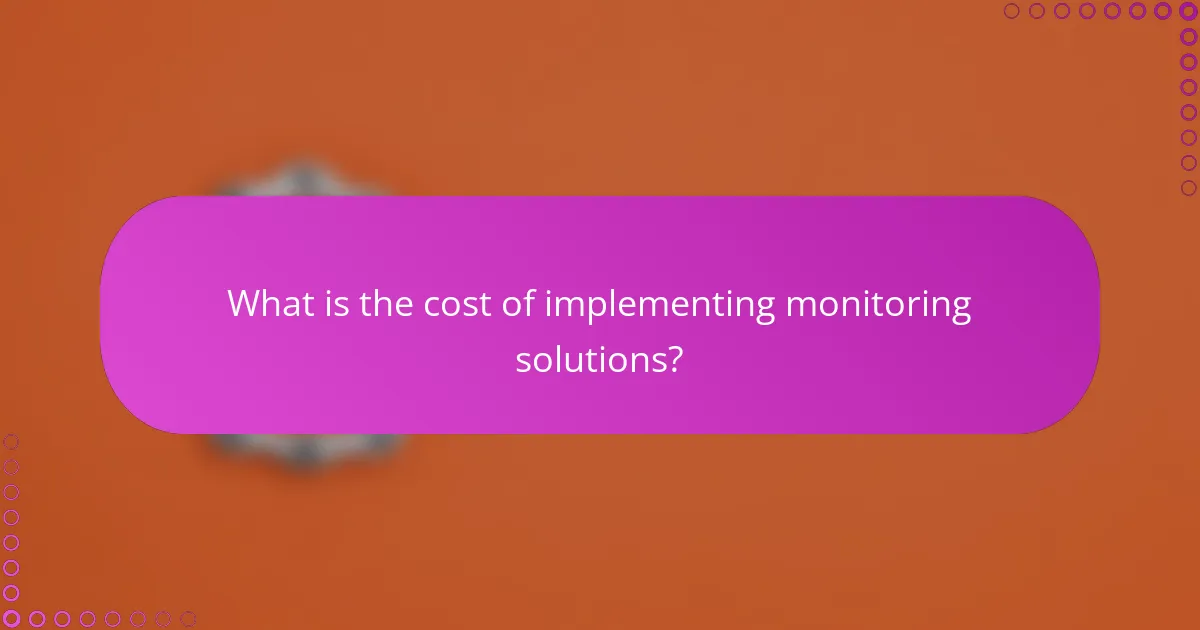
What is the cost of implementing monitoring solutions?
The cost of implementing monitoring solutions can vary significantly based on the pricing model, features, and scale of deployment. Businesses should consider both initial and ongoing expenses to evaluate the total investment required for effective monitoring.
Subscription-based pricing
Subscription-based pricing typically involves monthly or annual fees that provide access to monitoring solutions. This model can range from a few dozen to several hundred dollars per month, depending on the number of users, features included, and the scale of monitoring required.
One advantage of subscription pricing is the flexibility it offers; businesses can easily scale their usage up or down based on their needs. However, over time, these costs can accumulate, potentially leading to higher total expenses compared to one-time licensing fees.
One-time licensing fees
One-time licensing fees require an upfront payment for perpetual access to the monitoring software. These fees can vary widely, often falling within the low hundreds to several thousand dollars, depending on the complexity of the solution and the size of the organization.
This model can be more cost-effective in the long run for companies that plan to use the software for an extended period. However, it is essential to consider the potential costs of updates, maintenance, and support, which may not be included in the initial fee.
Cost of additional features
Many monitoring solutions offer additional features or modules that can enhance functionality, such as advanced analytics, integrations, or enhanced security. These features often come at an extra cost, which can range from a few hundred to several thousand dollars, depending on the specific enhancements.
When evaluating the cost of additional features, businesses should assess their actual needs and avoid unnecessary upgrades. It’s advisable to prioritize features that align with business objectives to ensure a good return on investment.
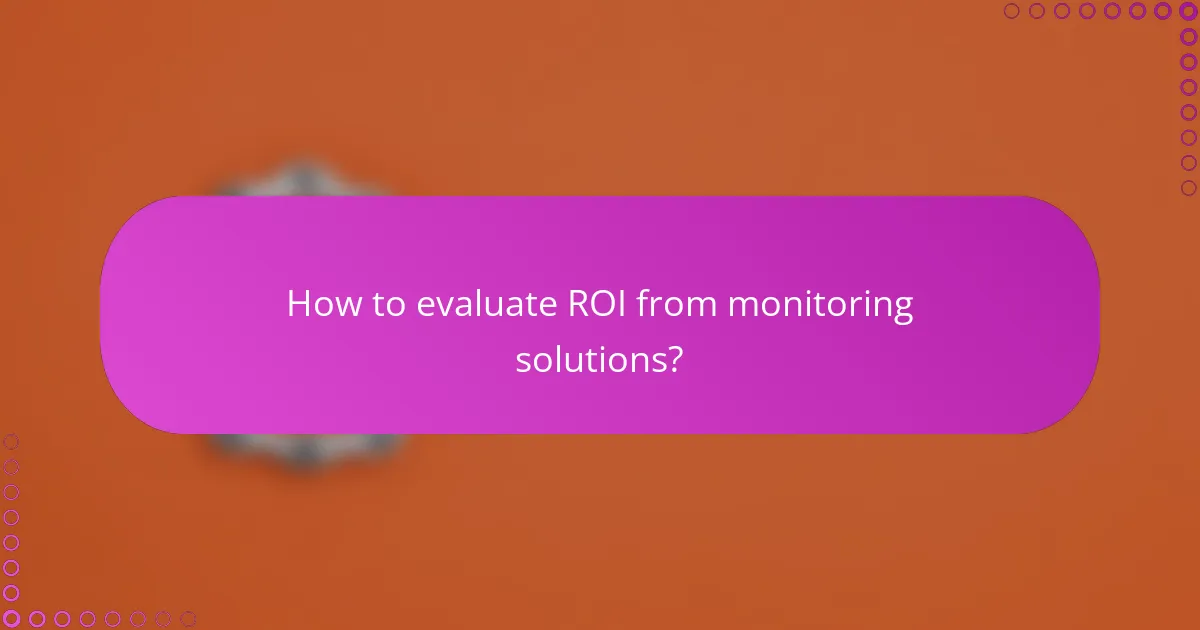
How to evaluate ROI from monitoring solutions?
To evaluate the ROI from monitoring solutions, assess the financial benefits gained against the costs incurred. Key factors include operational efficiency, downtime reduction, and customer satisfaction improvements, all of which contribute to overall profitability.
Increased operational efficiency
Monitoring solutions enhance operational efficiency by providing real-time insights into system performance and resource utilization. This allows organizations to identify bottlenecks and optimize workflows, leading to more streamlined processes.
For example, businesses can automate routine tasks or allocate resources more effectively, resulting in time savings and reduced labor costs. A well-implemented monitoring system can increase efficiency by 20-30%, depending on the industry.
Reduction in downtime
Reducing downtime is a critical benefit of monitoring solutions, as unplanned outages can significantly impact revenue. By continuously monitoring systems, organizations can detect issues before they escalate, allowing for proactive maintenance.
For instance, companies often experience downtime costs ranging from hundreds to thousands of dollars per minute. Implementing monitoring tools can reduce downtime by up to 50%, translating to substantial savings and improved service availability.
Improved customer satisfaction
Monitoring solutions contribute to improved customer satisfaction by ensuring that services are reliable and responsive. When systems operate smoothly, customers experience fewer disruptions, enhancing their overall experience.
Moreover, timely alerts and quick resolutions to issues can lead to higher customer retention rates. Businesses that invest in monitoring often see a direct correlation between system performance and customer satisfaction scores, with improvements of 10-20% being common in service-oriented sectors.
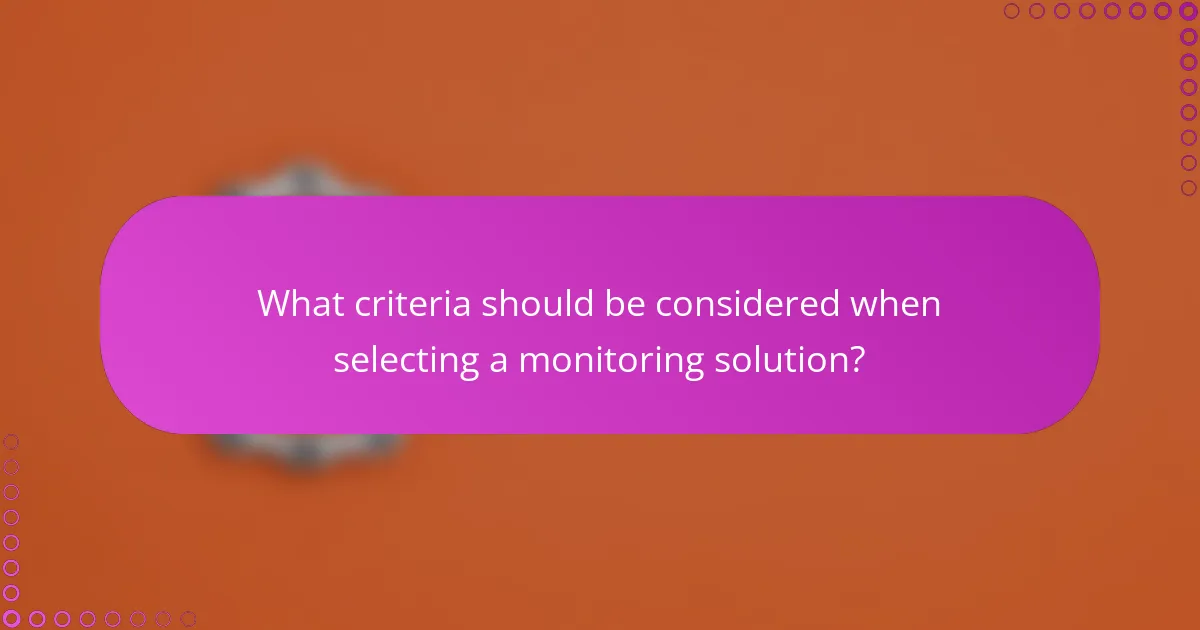
What criteria should be considered when selecting a monitoring solution?
When selecting a monitoring solution, consider factors such as scalability, integration capabilities, and support and training. These criteria ensure that the solution meets current needs while being adaptable for future growth and operational efficiency.
Scalability
Scalability refers to the ability of a monitoring solution to handle increased loads or expanded functionalities without compromising performance. Look for solutions that can easily scale up or down based on your organization’s size and requirements.
For example, a cloud-based monitoring tool may offer flexible pricing tiers that allow you to pay for only what you use, making it easier to adjust as your business grows. Ensure that the solution can accommodate future needs without requiring a complete overhaul.
Integration capabilities
Integration capabilities are crucial for ensuring that your monitoring solution works seamlessly with existing systems and tools. A good solution should support a wide range of APIs and data formats to facilitate easy data exchange.
Evaluate how well the monitoring tool integrates with your current software stack, such as ticketing systems or cloud services. This compatibility can significantly enhance your operational workflows and data analysis capabilities.
Support and training
Support and training are essential for maximizing the effectiveness of your monitoring solution. Look for vendors that offer comprehensive training programs and responsive customer support to help your team get the most out of the tool.
Consider the availability of resources such as documentation, online tutorials, and dedicated support teams. A solution with strong support can reduce downtime and improve user adoption, ultimately leading to better performance outcomes.
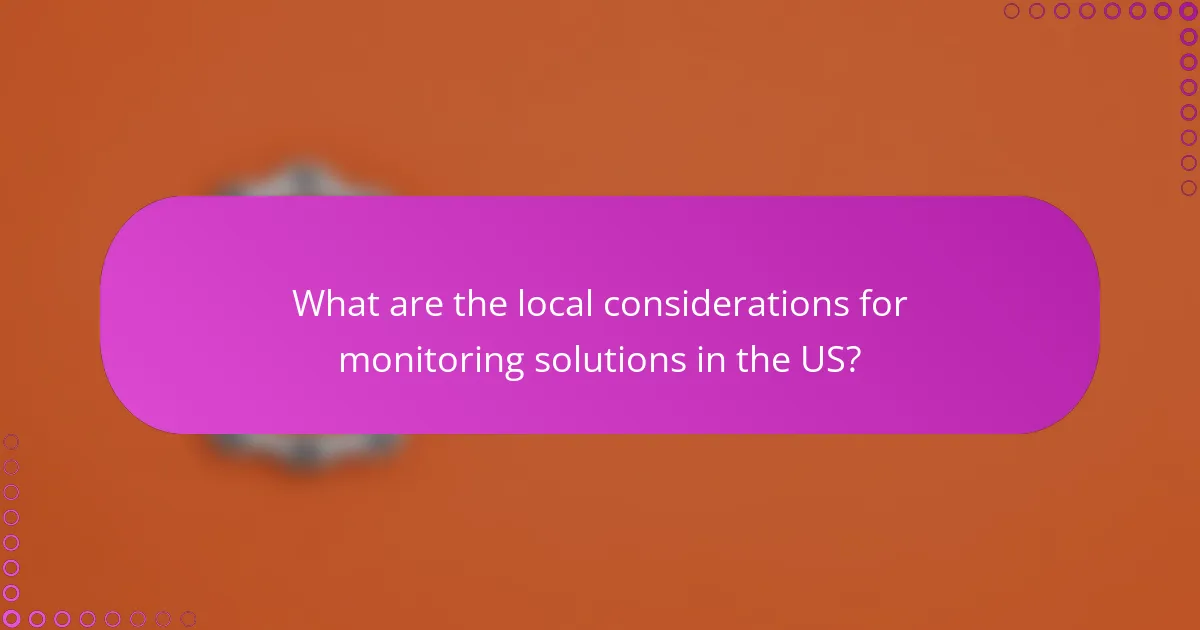
What are the local considerations for monitoring solutions in the US?
When evaluating monitoring solutions in the US, it is crucial to consider compliance with local regulations, the specific needs of your industry, and the potential return on investment (ROI). Understanding these factors can help organizations select the most effective monitoring tools that align with legal requirements and operational goals.
Compliance with regulations
In the US, compliance with regulations such as the Health Insurance Portability and Accountability Act (HIPAA) for healthcare or the Sarbanes-Oxley Act (SOX) for financial services is essential when implementing monitoring solutions. These regulations dictate how data should be handled, stored, and monitored, ensuring that sensitive information remains secure.
Organizations must assess their specific compliance requirements and choose monitoring solutions that offer features such as data encryption, access controls, and audit trails. For example, a healthcare provider may need a monitoring system that logs all access to patient records to comply with HIPAA.
Additionally, staying updated on state-specific regulations is important, as some states have stricter data protection laws. Regular audits and reviews of monitoring practices can help ensure ongoing compliance and mitigate potential legal risks.

